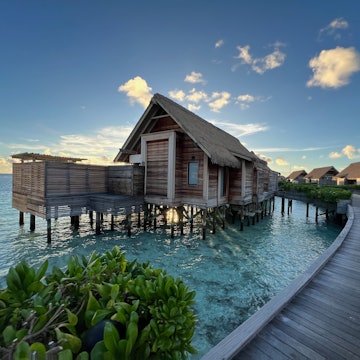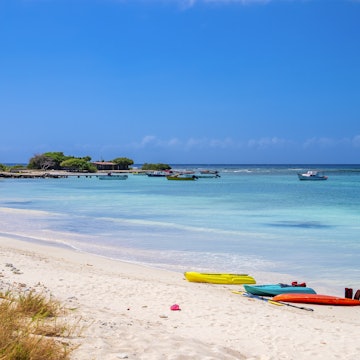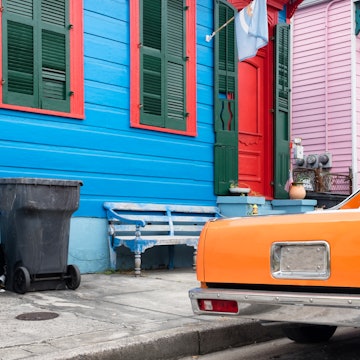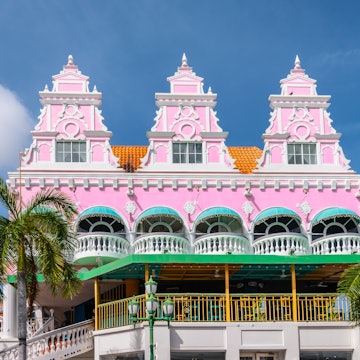

Cas Abao, Curaçao. fokke baarssen/Shutterstock
A mysteriously under-the-radar island despite its obvious charms, Curaçao is an unmissable stop in the southern Caribbean, particularly for those who love food, art, glorious beaches and destinations with loads of personality.
This amiable island also has an adventurous streak, offering excellent hiking and world-class diving.
The largest of the ABC Islands, Curaçao shines thanks to the sheer variety of things to do, offering everything in an easily navigable package. Here’s what you need to know before you visit for the first time.
When should I go to Curaçao?
The ABCs won the geographic lottery – they are some of the few islands that sit outside the Caribbean hurricane belt, so while you may receive residual rain from passing storms, head-on landfalls are rare, even when storms are their most active (hurricane season runs from June to November).
Stable temperatures (mid-80°F/30°C) and ever-present sunshine make Curaçao a great spot throughout the year, but things do tend to get busy December through February, as folks from the northern hemisphere head south to escape the cold and Carnival festivities kick into high gear in January and February.
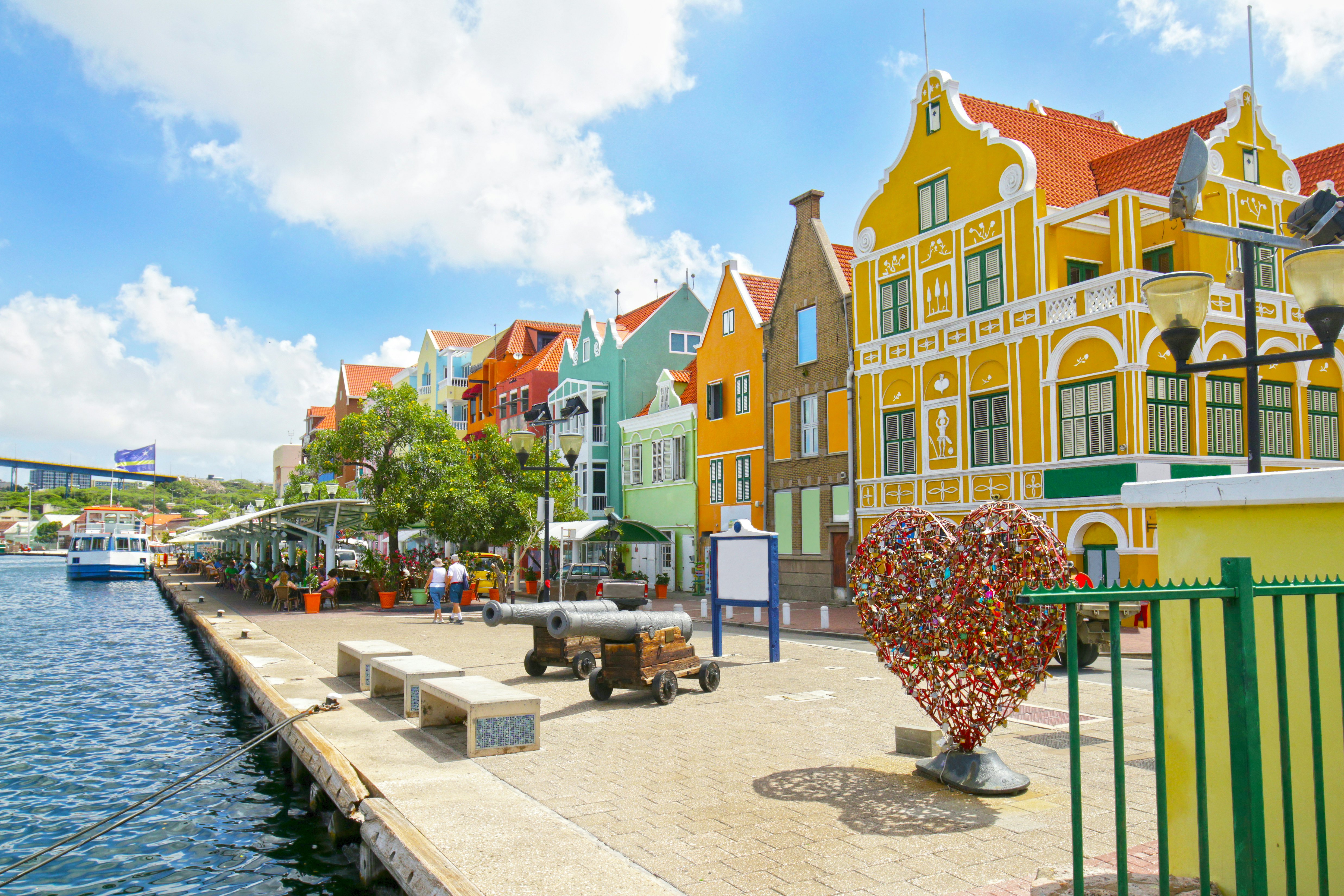
How much time should I spend in Curaçao?
You can absolutely have an incredible weekend in Curaçao, but for the best experience, we recommend staying at least four days so you can enjoy many of the highlights: Willemstad, Westpunt beaches, plus snorkeling and diving experiences.
However, a week or more would be best, especially if you plan on getting your diving certification in situ, a process which eats up a few days with coursework. In an ideal world, we suggest a two-week trip to get to know Curaçao, plus its neighbors Bonaire and Aruba – both are literally a puddle-jump away.
Is it easy to get in and around Curaçao?
Curaçao is an absolute breeze to navigate. The Hato International Airport sits on the north side of Willemstad and fields flights from Aruba, Bonaire, the Netherlands, the US, Colombia and Suriname. It’s only a 20-minute drive to the city center.
The easiest way to get around Curaçao is by renting a car; you’ll have the ultimate freedom to explore all the island’s corners, and it’s the best option if you’re short on time. Roads are paved and well-maintained, and parking in Willemstad is relatively easy.
There is a bus system that runs from the airport to Willemstad and several places in Westpunt, but service can be slow. You won’t find any rideshare services on the island, and taxis are eye-wateringly expensive.
Willemstad’s central neighborhoods – Punda, Otrobanda, Scharloo and Pietermaai – are very walkable, but you’ll need wheels if you’re heading away from the city center.

Top things to do in Curaçao
Snorkel off the beaches of Westpunt
Curaçao’s most dramatic beaches lie along the northwestern edge of the island. Here you’ll find a number of white-sand arcs of varying sizes, all framed by picturesque limestone cliffs and water so blue it confuses the eye. And that’s just topside – under the sea’s surface lies a whole other world teeming with life.
Spread out at family-friendly Grote Knip, grab your snorkel for the underwater wonders at Kleine Knip, or simply relax in picturesque surroundings at Playa Jeremi and Playa Lagun. Further south, enjoy the amenities of Cas Abao and Playa Porto Marí.
Tour the street art of Willemstad's Otrobanda neighborhood
Willemstad’s pastel downtown is a shutterbug’s dream, but the color doesn’t end there: Curaçao’s art scene has covered the historic walls in jaw-dropping, large-scale art pieces that reflect both the past and present.
Touring these works is a great way to learn about the creative current that powers this vivacious island.
The highest concentration of murals can be found in the Otrobanda neighborhood, and tours can be booked through Kaya Kaya Festival’s Artwalkestry program or Dushi Walks Curaçao.
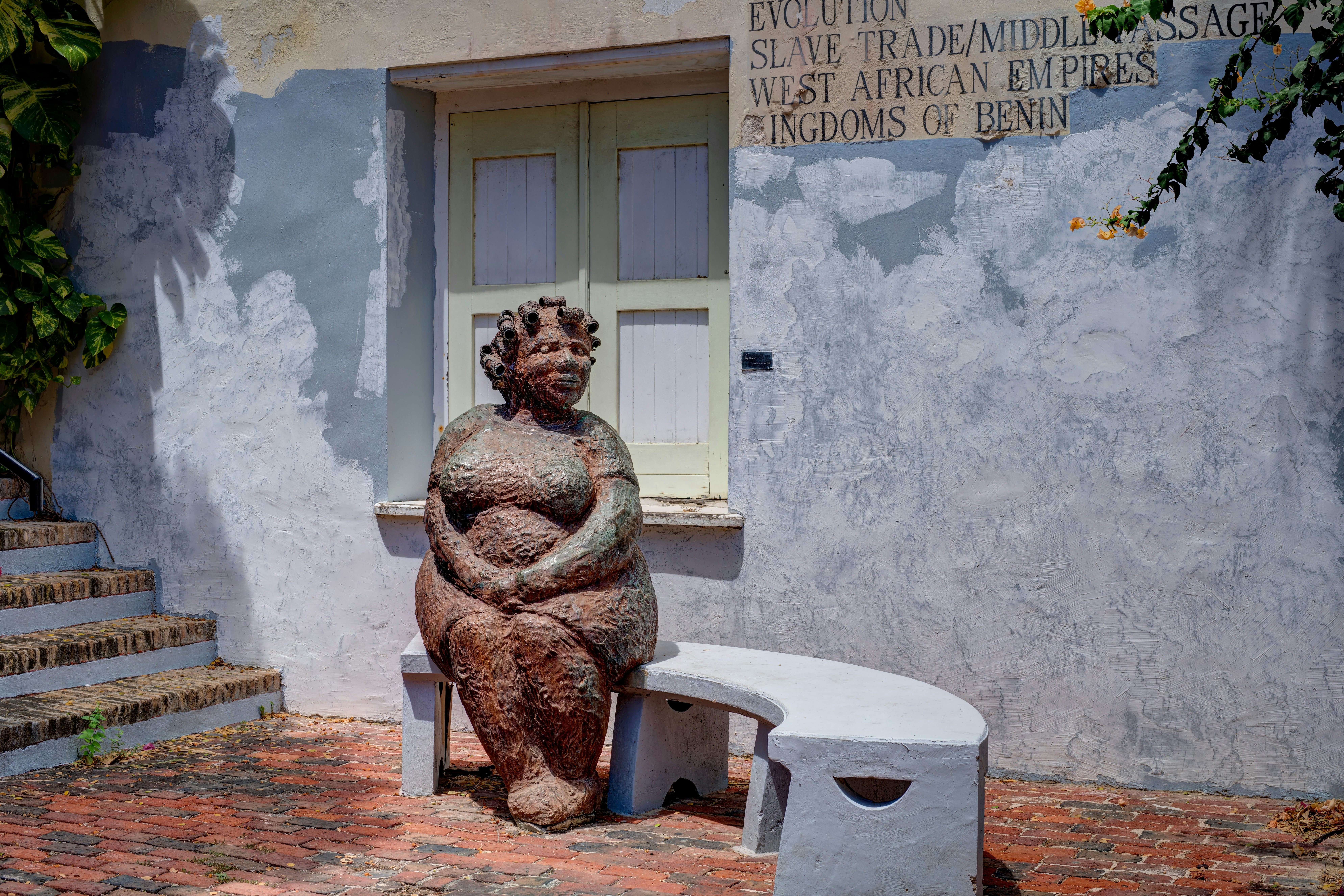
Learn about Curaçao's history at Museum Kura Hulanda
Curaçao’s history is profoundly interwoven with the terrible legacy of the Dutch West India Company and slavery; Curaçao was one of the main transfer points for enslaved people in the region, with millions passing through on the way to plantations in North and South America, and the rest of the Caribbean.
The trafficking of enslaved Africans was the island’s primary economic driver until its abolition.
The Museum Kura Hulanda in Otrobanda delves into the role the institution played on the island and the Caribbean, one of the only museums of its kind. It's a heavy but essential stop that delves into the forces that shaped Curaçao and the rest of the western hemisphere.
See blowholes at Shete Boka National Park
One of the most unique natural attractions on the island, Shete Boka National Park encompasses a series of coralstone-framed inlets that direct the east coast’s powerful currents into thundering blowholes that mesmerize with their height and sound.
The inlets are connected via trails across the rocky coastal terrain, and the park is a protected turtle nesting site for several species.

Dive Curaçao’s fantastic sites
Curaçao’s west coast is replete with snorkeling and dive sites, both boat- and shore-accessible. Spot angelfish in an underwater cave at the Blue Room, float above fractured boat parts-turned-reef at Shipwreck Point or marvel at the prolific coral and fish life in the dive sites around Caracasbaai.
Snorkelers will also have plenty to do – don’t miss the coral-covered cliff walls of Kleine Knip and Playa Lagún, or the mangroves near Rif Sint Mari.
My favorite thing about Curaçao
Curaçao is one of those places that balances culture and adventure exceptionally well. During the day you can hike Mt Christoffel or dive at Director’s Bay, and in the evening you can wander Willemstad’s city’s candy-colored alleyways, discover cutting-edge restaurants, such as Kome and the Lemon Tree, or enjoy the sunset from a rooftop bar (don’t miss Cascada). Curaçao can never be accused of being one-note.
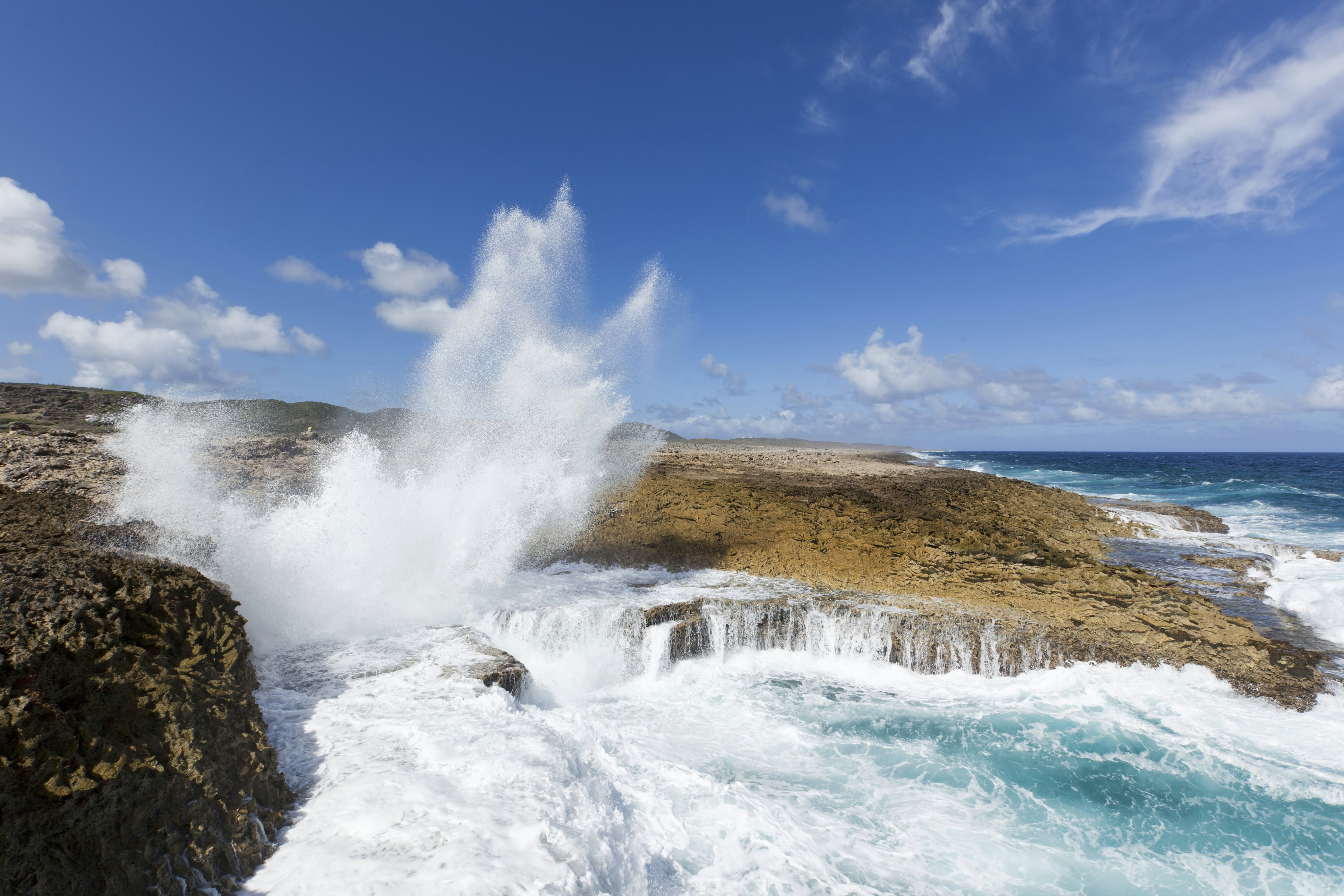
How much money do I need for Curaçao?
Curaçao isn't the most expensive Caribbean island, but it also isn't the cheapest. Debit and credit cards are accepted everywhere except the most rural parts of the island, but it’s always good to keep some cash on hand just in case.
Note: the currency is the Caribbean guilder (introduced in March 2025), which is different from the currencies in Aruba and Bonaire, despite their close proximity. To help you plan your budget, here's an idea of some costs:
Night at a downtown Willemstad hotel: Cg 270–450 (US$150–250)
Paddleboard rental at Grote Knip: Cg 36 (US$20)
Iced latte from La Reina: from Cg 7 (from US$4)
A bowl of Karni Stoba (beef stew) from Plasa Bieu: Cg 23 (US$13)
A bottle of Blue Curaçao from Landhuis Chobolobo: Cg 30–54 (US$17–30)
Entrance to Shete Boka National Park: Cg 27 (US$15)
Ticket to Klein Curaçao: Cg 252 (US$140)

There are entry requirements for all visitors
All visitors to Curaçao are required to obtain the Digital Immigration Card online within seven days of their trip. It’s free; be sure to download it to your devices prior to arrival.
Beware the intensity of the sun
The ABCs are balmy, breezy places, but don’t be fooled: the sun is extremely intense due to their close proximity to the equator. Protect yourself accordingly with SPF, preferably of the reef-safe variety.
There is a tipping culture
Tipping culture in Curaçao generally mirrors that of the Netherlands – it’s optional, but appreciated and clocks in at about 10–15% for meals.
Sometimes restaurants and bars include a service charge in the bill. Tips for dive instructors or other tour providers are appreciated, usually running around 10% of the dive cost.










